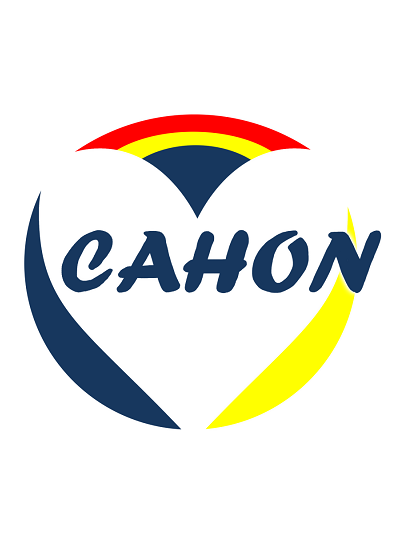前线ponatinib和blinatumumab治疗后Ph + ALL患者复发的分子特征和预测因素
IF 29.5
1区 医学
Q1 HEMATOLOGY
引用次数: 0
摘要
一些研究表明,由blinatumomab和BCR::ABL1酪氨酸激酶抑制剂组成的无化疗方案对费城染色体阳性急性淋巴细胞白血病(Ph + ALL)非常有效。然而,预测这些无化疗方案复发的临床和分子特征在很大程度上是未知的。我们对76例新诊断的Ph + ALL患者进行了blinatumomab和ponatinib联合的前瞻性II期临床试验。患者接受12-15次鞘内化疗作为中枢神经系统(CNS)预防。分析复发的模式和复发的临床和分子预测因素。中位随访29个月,估计3年无事件生存率为78%,3年总生存率为88%。10例患者(13%)复发,中位复发时间为18个月(范围8-24个月)。6例复发仅发生在髓外部位(中枢神经系统,n = 5;腹膜和淋巴结,n = 1)。所有患者复发时CD19表达仍然很高。在单因素分析中,与复发风险增加相关的因素是:诊断时白细胞(WBC)≥70 × 109/L (sHR 8.86 [95% CI 2.33-33.70];P = 0.001),诊断时中枢神经系统受累(sHR为6.87 [95% CI为1.54-30.68];P = 0.01), VPREB1缺失(sHR 4.06 [95% CI 1.05-15.76];p = 0.04)。22%的患者WBC≥70 × 109/L,与53%的累积复发率(CIR)相关,而WBC < 70 × 109/L患者的累积复发率为6%。无论是ikzf1 +基因型、BCR::ABL1转录物类型,还是通过IG/TR重排的下一代测序可测量的残留疾病动力学,都没有显著影响复发的风险。多因素分析显示,诊断时的高白细胞计数是唯一与复发显著相关的变量(sHR 16.29 [95% CI 2.35-113.00;p = 0.005)。WBC≥70 × 109/L是接受一线blinatumab和ponatinib治疗的Ph + ALL患者的高危特征,可能取代基线分子特征对预后的重要性。这些患者可能需要替代的一线治疗策略来降低复发风险并改善长期预后。ClinicalTrials.gov (NCT03263572)。本文章由计算机程序翻译,如有差异,请以英文原文为准。
Molecular characterization and predictors of relapse in patients with Ph + ALL after frontline ponatinib and blinatumomab
Several studies have suggested that chemotherapy-free regimens consisting of blinatumomab and a BCR::ABL1 tyrosine kinase inhibitor are highly effective in Philadelphia chromosome-positive acute lymphoblastic leukemia (Ph + ALL). However, the clinical and molecular characteristics that predict for relapse with these chemotherapy-free regimens are largely unknown. We conducted a prospective phase II clinical trial of the combination of blinatumomab and ponatinib in 76 patients with newly diagnosed Ph + ALL. Patients received 12–15 doses of intrathecal chemotherapy as central nervous systemic (CNS) prophylaxis. The patterns of relapse and the clinical and molecular predictors of relapse were analyzed. With a median follow-up of 29 months, the estimated 3-year event-free survival rate was 78% and the 3-year overall survival rate was 88%. Ten patients (13%) relapsed, with a median time to relapse of 18 months (range, 8–24 months). Six relapses occurred only in extramedullary sites (CNS, n = 5; peritoneum and lymph nodes, n = 1). CD19 expression remained high at relapse in all patients. On univariate analysis, factors associated with an increased risk of relapse were: white blood cell (WBC) ≥ 70 × 109/L at diagnosis (sHR 8.86 [95% CI 2.33–33.70]; P = 0.001), CNS involvement at diagnosis (sHR 6.87 [95% CI 1.54–30.68]; P = 0.01), and VPREB1 deletion (sHR 4.06 [95% CI 1.05–15.76]; P = 0.04). WBC ≥ 70 × 109/L was present in 22% of the cohort and was associated with a 53% cumulative incidence of relapse (CIR), as compared with a CIR rate of 6% for patients with WBC < 70 × 109/L. Neither IKZF1plus genotype, BCR::ABL1 transcript type, nor measurable residual disease kinetics by next-generation sequencing for IG/TR rearrangements significantly impacted the risk of relapse. High WBC at diagnosis was the only variable significantly associated with relapse on multivariate analysis (sHR 16.29 [95% CI 2.35–113.00; P = 0.005). WBC ≥ 70 × 109/L is a high-risk feature in patients with Ph + ALL receiving frontline blinatumomab and ponatinib and may supersede the prognostic importance of baseline molecular features. Alternative frontline treatment strategies may be needed for these patients to reduce the risk of relapse and improve long-term outcomes. ClinicalTrials.gov (NCT03263572).
求助全文
通过发布文献求助,成功后即可免费获取论文全文。
去求助
来源期刊
CiteScore
48.10
自引率
2.10%
发文量
169
审稿时长
6-12 weeks
期刊介绍:
The Journal of Hematology & Oncology, an open-access journal, publishes high-quality research covering all aspects of hematology and oncology, including reviews and research highlights on "hot topics" by leading experts.
Given the close relationship and rapid evolution of hematology and oncology, the journal aims to meet the demand for a dedicated platform for publishing discoveries from both fields. It serves as an international platform for sharing laboratory and clinical findings among laboratory scientists, physician scientists, hematologists, and oncologists in an open-access format. With a rapid turnaround time from submission to publication, the journal facilitates real-time sharing of knowledge and new successes.

 求助内容:
求助内容: 应助结果提醒方式:
应助结果提醒方式:


